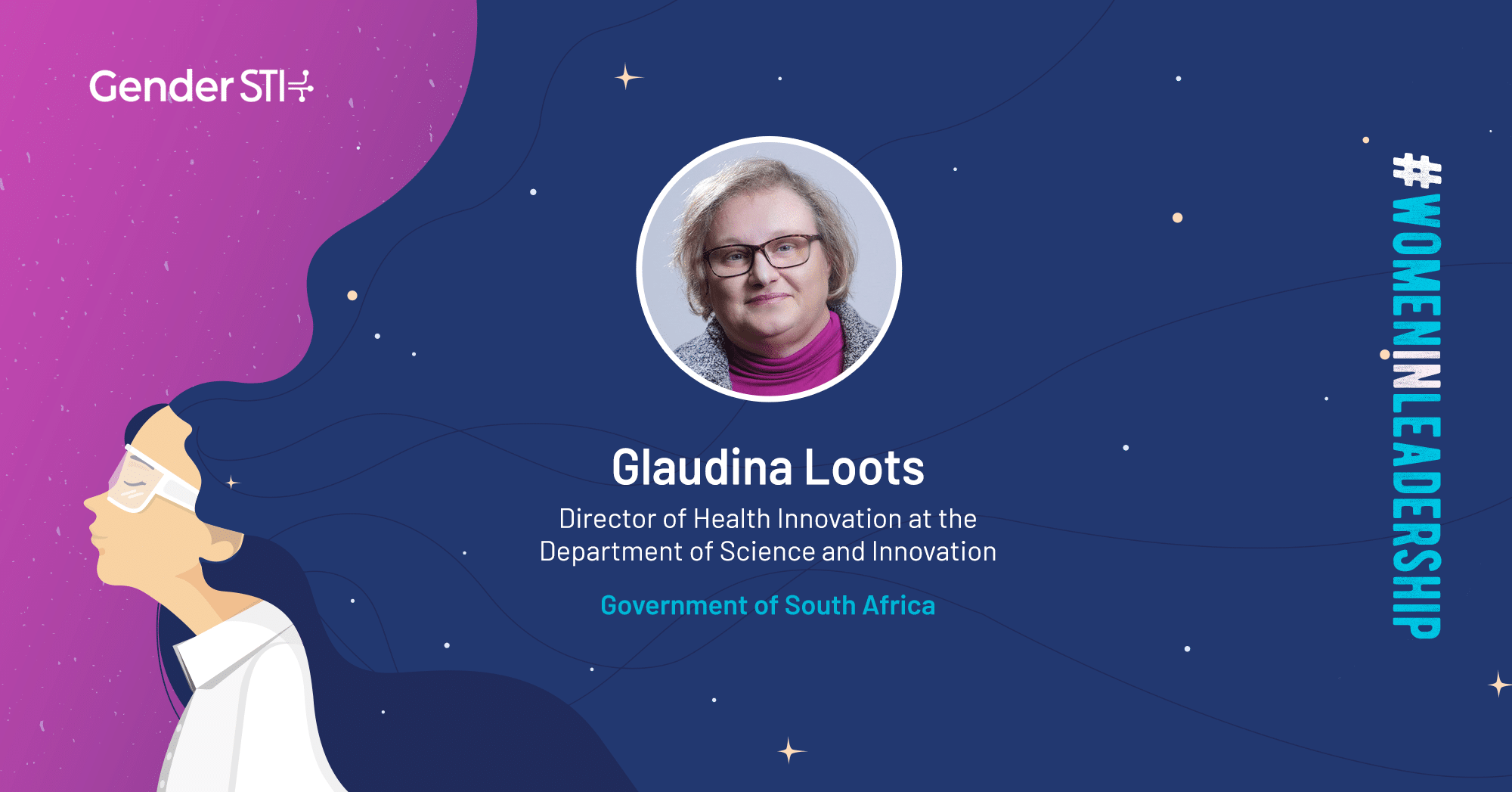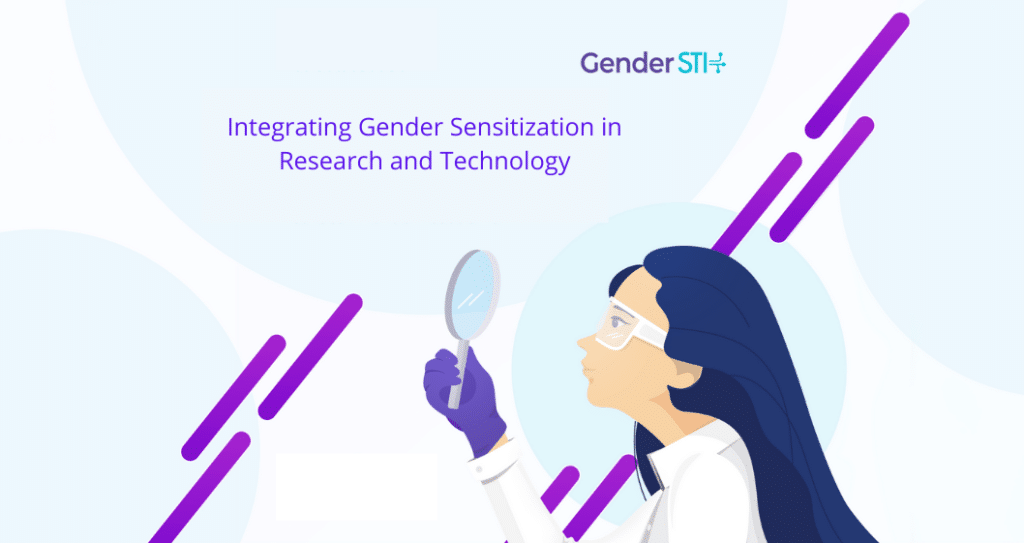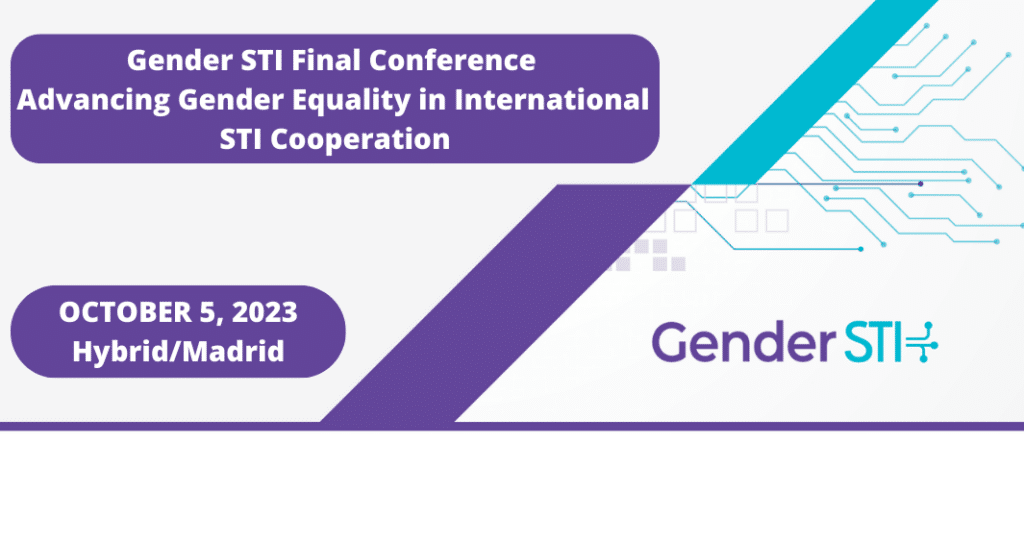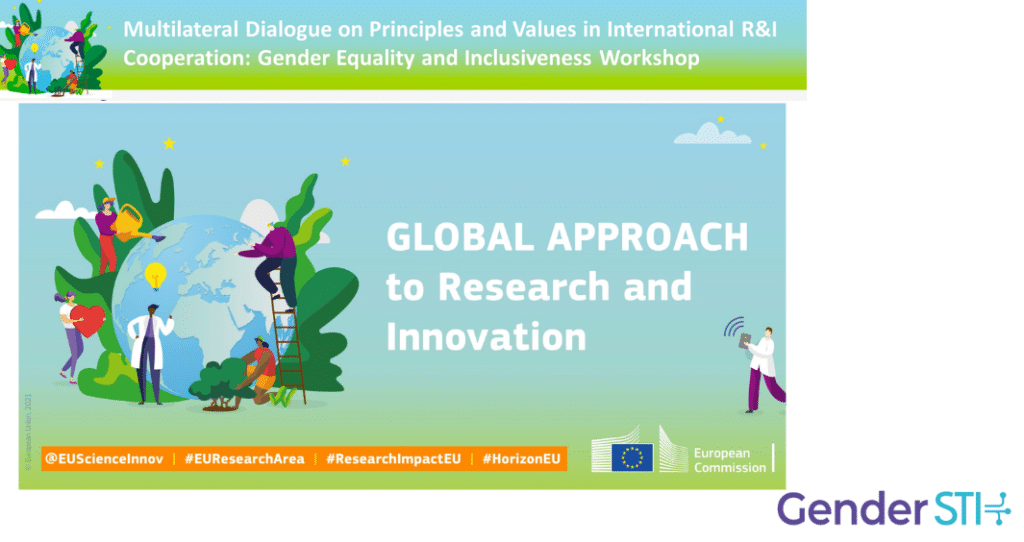Glaudina Loots was nominated for Gender STI's #WomenInLeadership Campaign, which celebrates women leaders in science, technology and innovation, by the Council for Scientific and Industrial Research in South Africa.
She is the Director for Health Innovation at the Department of Science and Innovation in South Africa and as such is responsible for the implementation of the health components of the bioeconomy strategy for the country. She concentrates on enabling research and innovation that leads to discovery and evaluation of new drug and treatment regimes, the development of new vaccines and new robust diagnostics, as well as the development of medical devices. Loots was instrumental in the creation of the Strategic Health Innovation Partnership Initiative at the South African Medical Research Council. She is a member of the Ministerial Advisory Committees on COVID-19 Vaccines, as well as Antimicrobial Resistance.
Loots spoke to Gender STI about her experience as a woman leader in honor of International Women's Day 2021.
Can you tell us a bit about your job and your responsibilities?
I am the Director of Health Innovation at the Department of Science and Innovation of the South Africa government. I am responsible for setting the priorities for health innovation in the country and enabling an environment that is conducive to fostering innovation in healthcare. This encompasses the full spectrum, from basic discovery to actual proof of concept and commercialization.
Did you face any challenges on your journey to become a woman leader? How did you overcome them?
I was lucky to have had parents that believed in girls being treated the same as boys and then to start to work in an environment with strong female leaders. Gender equality is now ensconced in the South Africa constitution.
I was also part of the core team that established and drove the Women in Science activities in South Africa in the early 2000’s. However, the built-in bias against young girls and women wanting to go into a science career is still a reality.
What goals do you have as a leader?
To ensure that I use my leadership position to provide an environment that can assist in finding solutions for the health care needs of women, mothers and young girls, whilst also taking into consideration the needs of the community. To harness the latest technologies to improve the livelihoods of people in resource poor settings.
How would you describe the gender balance in decision making in science, technology and innovation (STI)?
There is a great awareness of the importance to include women’s voices, but in the more traditional science and engineering fields, women are still very much in the minority. Within life sciences, women are dominating the leadership space. The bias against young girls doing physics, ICT and “nerdy stuff” is still very ensconced in society and the softer options are still encouraged.
What would you tell young girls and women who would like to become leaders in their professional fields one day?
Apart from “go girl, go,” it is important to focus on your dreams and to strive for what you feel is important. Achievements by women in science leadership positions are made all the more valuable as aside from overcoming difficult paths to get there, you made it easier for the next group of young women to follow and further progress the field.
As you may know, the Gender STI project focuses on promoting gender equality in international cooperation in STI. Do you have any ideas on how we could promote gender equality in this area?
One of the interventions that should be encouraged is to ensure that young women are included in projects. It should become a part of the performance measurements of projects. The COHRED Research Fairness Initiative provides good examples and measurements on how gender equality can be built into research and development projects.
What do you think needs to be done to increase the number of women leaders in STI? Encourage research funders to insist on gender equality and to provide additional funding for young women to be included in projects. Create the opportunities for young women to take off and fly.
Follow Gender STI’s #WomenInLeadership campaign on Twitter, LinkedIn and Facebook for more great interviews. Join the conversation using #WomenInLeadership, #IWD2021 and #GenderSTI.



